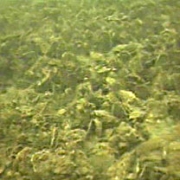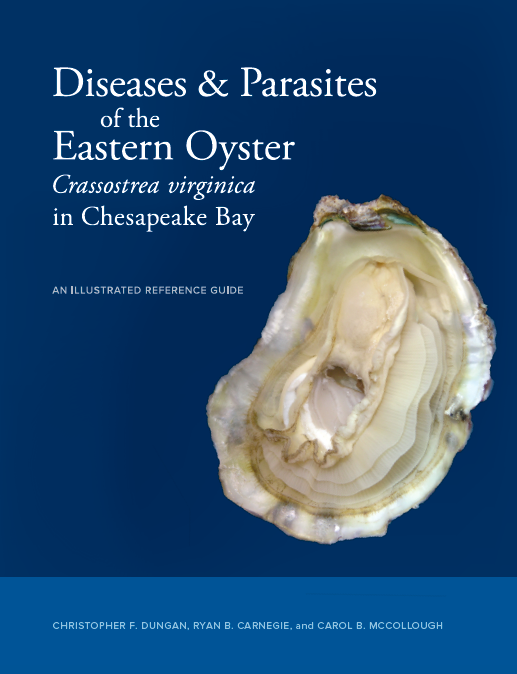Knauss legislative fellowships in Congress help build careers — and they're fun and educational. See our video and fact sheet for details.
The Oyster Files: New Study Details 50 years of Oyster Poaching

Undersized oysters are most common citation
Call it a police blotter for Chesapeake Bay oysters.
At a time when the population of wild oysters remains at historic lows in the Bay, a group of local scientists recently completed an ambitious task: a first-ever study of five decades of state data about where and when oysters have been illegally harvested across the Maryland portion of the estuary. And to find out whether oyster crimes pay, the researchers examined how much violators were fined. The team hopes that their findings may help the state better police its waters, providing more security to the region’s few remaining wild oysters.
The researchers discovered that three-quarters of the 5,282 citations handed out in Maryland waters from 1959 to 2010 were for picking up undersized oysters. That finding may have special significance for the recovery of the population in the Bay. And, the authors argue, in many cases, fines for illegal harvesting from 2000 to 2009 seemed too small to significantly deter criminal activity, although the state has raised its penalties since then.
For Kennedy Paynter, an oyster biologist at the University of Maryland, College Park and one of the report’s authors, the findings together suggest that poaching should be taken more seriously. The Bay’s oysters offer benefits beyond their sale price at dockside, he notes. They also filter excess algae from the water, and the shells along a reef provide a home for numerous small animals. “We’re going beyond a fishing value and talking about an ecosystem value,” Paynter says.
Paynter has seen the damage done to that ecosystem by poaching firsthand. He often goes scuba diving on restored oyster reefs -- sites where scientists like him had planted seed oysters to build up a new community of the bivalves and other organisms. At times, he’s found a sad-looking scene, discovering little remaining there but scars. Poachers had come through, perhaps even in the dead of night, with an oyster dredge, a clawlike tool that can be dragged behind a boat to pull up the mollusks below.
Paynter suspects that most Maryland watermen steer clear of these sanctuaries, which are protected by law. But some don’t. “As in any other aspect of our culture, there are criminal elements and there are honest elements,” he says. But those that do cheat, he says, could be throwing a wrench into the oyster’s tentative recovery.
He was sharing this suspicion with a group of scientists at a 2010 conference when he met Dave Love, a microbiologist who studies issues surrounding aquaculture at the Johns Hopkins Center for a Livable Future. Love grew up on Virginia’s Lynnhaven River. There, he and his father spent hours huddled under the family’s dock, farming a few thousand oysters each year. As a scientist, Love, like Paynter, wanted to find out how widespread illegal harvesting was on the Bay. Over a beer, the duo came up with a research plan.
The team pored through records kept by the Maryland Department of Natural Resources (DNR), whose police officers enforce the state’s fishing rules. The researchers cross-referenced that information with court documents to see how each and every citation for oyster poaching was resolved. Did the fisher get convicted, and how much did he or she have to pay in fines? The team’s results appear in the August issue of the Journal of Shellfish Research.
That dataset is far from complete, Love notes. After all, it doesn’t include those poachers who got away scot-free. “What we see here are the fraction that were caught,” he says. Nevertheless, the case records provide some insights about oyster violations. Most watermen weren’t, in fact, cited for looting an oyster sanctuary -- that crime accounted for only 9 percent of the citations. Most were dinged for catching and keeping too many immature oysters, or small bivalves that were less than 3 inches long. That’s a problem because taking small oysters essentially blocks the next generation of adults from growing to maturity and reproducing.
Larry Simns, president of the Maryland Watermen’s Association, says that most watermen don’t intentionally harvest undersized oysters. But it’s not easy to cull the smaller ones. Watermen usually do it by sight, and when you’re working fast, you sometimes collect a few too many that fall short of 3 inches. “It’s just an error in judgment,” he says. State rules allow oystermen to keep five small oysters for every 100 they drop in their bushels for that reason. But Simns thinks that watermen who go just a bit above their limit should be granted more leeway than those who overshoot the mark by a lot or fail to cull their harvests at all.
What really caught Love’s eye was that the rate of citations in Maryland seemed to spike not during good oystering years but during bad ones -- that is, years when oyster harvests dropped below even their normally low levels, and, as a result, fewer watermen were employed in the industry. To him, that suggests that economics may be driving illegal harvesting on the Bay, at least somewhat. In other words, for a normally honest waterman, poaching may begin to look better and better when oysters become scarcer and money gets tighter.
When it comes to policing the Bay, such findings could help Maryland hone its targets, says Michael Naylor, the shellfish program director for DNR and one of the collaborators on the recent report. Before, he says, it made sense to suggest that, since oyster harvests have hit historic lows, law enforcement could also be scaled back. But the state may now want to consider ramping up, not decreasing, police work during poor oyster years, he says. “This is exactly the kind of information that helps the department allocate resources.”
Just what percentage of active watermen get cited each year is unclear, especially since the number of men and women out on the water varies from season to season. But those that did get caught were found guilty about 80 percent of the time. From 2000 to 2009, men and women convicted of illegal oyster harvesting paid an average fine of $180. On a net level, that’s much less than what watermen might make in a day if they’re catching their limit.
Simns says that tougher rules adopted by the state in 2010 have put higher stakes on bending the rules. Fines were raised, and watermen now stand to lose their licenses for committing particularly egregious violations, such as harvesting from a sanctuary. But, he adds, a small minority of those out on the water may still break the law, and “they do a lot of damage to the watermen’s image.”
Even with the higher penalties in place, Paynter argues that the cost of illegally harvesting oysters is still too low. A fine of a few hundred dollars can’t match the ecosystem worth of those animals, he says. After all, it costs the state and federal government hundreds of thousands of dollars to restore a single oyster bed from scratch. When poachers are “destroying a large federal and state investment, I think some rule of restitution would be a good disincentive,” Paynter says. And that would put a much bigger price on the head of the small, but valuable, oyster.
-- Daniel Strain
Journal article:
Analysis of marine police citations and judicial decisions for illegal harvesting of Eastern oysters ( Crassostrea virginica, Gmelin 1791) in the Maryland Portion of the Chesapeake Bay, United States, from 1959 to 2010. Cynthia J. Bashore, Hillary A. Lane, Kennedy T. Paynter, Mike Naylor, James R. Harding and David C. Love. Journal of Shellfish Research, August 2012, 31(3):591–598.
Learn more: See Maryland Sea Grant's page about oysters.







